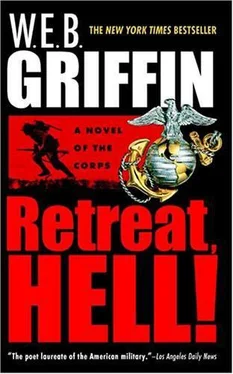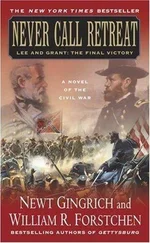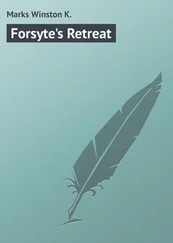"You about ready, Schneider?"
"Anytime, sir," Schneider's metallic voice replied.
"K-16, Army 4003," Donald's voice said.
"Go ahead, Army 4003,' a new voice responded.
"Army 4003, a flight of two H-19 helicopters, on the tarmac in front of the hangar across from base ops. Request takeoff permission for a low-level flight on a departure heading of 250 degrees."
"4003, where are you going?"
"K-16, Inchon. We will not exceed 1,000 feet en route."
"4003, understand departure heading 250 degrees, destination Inchon, flight level under 1,000. Be advised that there are multiengine aircraft in the pattern making an approach to runway 27. The altimeter is two niner niner. The winds are negligible. K-16 clears 4003 for immediate takeoff on a departure heading of 250 degrees. Advise when clear of the field."
"Roger, K-16. Army 4003 lifting off at this time."
Donald did something to the controls. The sound of the engine changed. There was more vibration. The tail of the helicopter seemed to rise, and then they were moving very slowly across the tarmac, just a few feet off the ground. The helicopter turned at the edge of the hangar, seemed to both accelerate and rise a few more feet off the ground.
Then, when it had passed over the airport boundary, it turned and climbed to about 500 feet.
Jesus Christ, Major Kenneth R. McCoy thought, you can see just about everything from up here! This noisy goddamn machine is really going to be useful!
[SEVEN]
Haneda Airfield
Tokyo, Japan
O9OS 3O September 195O
Captain Paul R. Jernigan, who would command Trans-Global Airways Flight 908— City of Los Angeles —Lockheed Constellation Service from Tokyo to San Francisco with fuel stops at Wake Island and Honolulu, had no idea at all that he would be carrying Fleming Pickering until he looked out the window and saw him approaching the aircraft.
He pushed himself out of the seat, told his copilot and the flight engineer that "Jesus Christ, Pickering himself is getting on!" and then left the cockpit so that he could personally welcome aboard the man who owned the airline.
"Welcome aboard, sir," he said. "My name is Jernigan."
"Thank you, Captain," Pickering said, offering his hand. "This is another kind of captain, George Hart. My name is Pickering."
"Yes, sir. I know. It's a pleasure to have you aboard, gentlemen."
The senior stewardess who had been counting heads in the rear of the airplane saw the captain standing by the door and came quickly forward and saw who it was.
"We heard you were coming with us, Commodore," she said. "Welcome aboard. We have you in 1A, the window seat, and 1B."
Never thought to tell me, huh, you airhead! Captain Jernigan thought rather unkindly. He had been known to comment that if he had his choice between flying B-17s over Berlin, which he had done, or flying Connies with six stewardesses aboard, as he was doing now, he would take Berlin anytime.
"Thank you," Pickering said, and found his seat.
"You want the window, George?" he asked.
"Up to you, Boss. I don't care either way."
Pickering slid into the window seat.
"Once we're in the air, please feel free to come to the cockpit, Commodore," Captain Jernigan said. He had picked up on the title, and heard it was what they called the senior of a group of ship captains.
"Thank you," Pickering said.
"Commodore," the senior stewardess asked, "can I get you anything? Coffee? Something stronger? While we're waiting for our clearance?"
"No. Thank you very much," Pickering said, and then, a moment later: "Hold on. Bring me a Bloody Mary, please. Better make it a double."
George Hart looked at him in surprise. Pickering rarely drank at this time of day. Then he saw the silvered cast-aluminum plaque attached to the bulkhead before them, where they would see it all the way across the Pacific.
THIS TRANS-GLOBAL LOCKHEED CONSTELLATION "THE CITY OF LOS ANGELES"
ON JUNE 1, 1950
SET THE CURRENT SPEED RECORD FOR COMMERCIAL AIR TRAVEL BETWEEN SAN FRANCISCO AND TOKYO
CAPTAIN MALCOLM S. PICKERING
CHIEF PILOT OF TRANS-GLOBAL AIRWAYS WAS IN COMMAND
Pickering saw Hart looking at him. Hart turned to the stewardess. "Make it two of those, please," he said.
Chapter Six
[ONE]
8O23 Transportation Company (Depot, Forward)
Inchon, South Korea
0935 3O September 195O
Captain Francis P. MacNamara, Transportation Corps, his attention caught by the fluckata-fluckata-fluckata sound of rotor blades, stepped outside his office— a canvas fly—and looked skyward.
MacNamara, a stocky, redheaded thirty-five-year-old Irishman from South Boston, had earned a commission in World War II, risen to captain, decided he liked the Army, and elected to remain in service when the war was over. In 1946, while assigned to the Army of Occupation in Germany, he had been told that he was about to be RIF'd.
RIF'd was an unofficial but universally understood and used acronym. The Army didn't need as many Transportation Corps officers as it had during the war, and there was consequently a Reduction In Force program involuntarily releasing from active duty those officers it no longer needed. Those selected to be released were said to be RIF'd.
He had also been told that he could enlist as a master sergeant. He had been a PFC when he had gone to OCS. There was a lot to be said for being a master sergeant, and he had also learned that he could retire from the service after twenty years of service at fifty percent of his basic pay, and further that he could retire at the highest grade held in wartime—in other words, as a captain. He reenlisted.
First Sergeant Francis P. MacNamara, Headquarters and Headquarters Company, the Transportation Corps School, Fort Eustis, Virginia (Captain, TC, Reserve), had been recalled to active duty five days after the North Koreans crossed the 38th Parallel.
His first assignment had been at the Anniston, Alabama, Ordnance Depot, where he had been responsible for the acceptance by the Transportation Corps of wheeled vehicles stored by the Ordnance Corps, and then seeing them moved to the port of Mobile, Alabama, for shipment to the Far East. During this period, the 9th Transportation Company (Provisional) was activated, and he was given command.
The five officers and 145 enlisted men of the 9th Transportation Company, and 608 wheeled vehicles ranging from jeeps to tank transporters, sailed from Mobile to Yokohama, Japan, aboard the Captain J. C. Buffett, a Waterman Steamship Line freighter pressed into service. On arrival in Yokohama, the 9th Transportation Company (Provisional) was redesignated the 8023d Transportation Company (Depot, Forward) and Captain MacNamara was told that it would shortly sail aboard the Captain J. C Buffett for Pusan for service with the Eighth U.S. Army.
That didn't happen. The Captain J.C Buffett lay anchored in Yokohama Harbor until 10 September, when it weighed anchor and joined the fleet of vessels bound for the Inchon Invasion.
On 14 September, the Captain J. C. Buffett dropped anchor just outside the Flying Fish Channel leading to Inchon, from which position the next morning they could see the warships and attack transports sail into the channel for the invasion.
Commencing 20 September—once Inchon was secure—the 8023d and its 608 vehicles began to debark. This took some time, because of the tides at Inchon, which saw the Captain J. C. Buffett forced to hoist anchor, sail into Inchon, and off-load as many vehicles as possible before the receding tides made it necessary for her to go back down the Flying Fish Channel, drop anchor again, and wait for the next high tide. The off-loading procedure was further hampered by the shortage of equipment in Inchon capable of lifting the tank transporters, heavy wreckers, and other outsized wheeled vehicles.
Читать дальше












